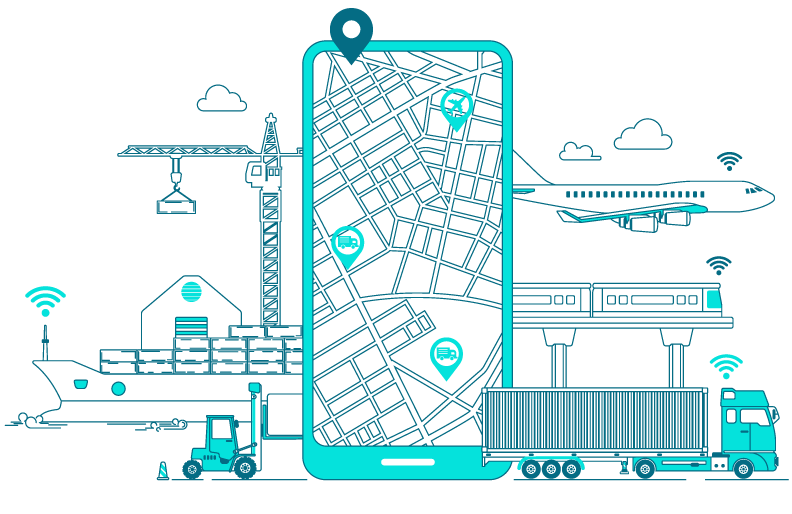Introduction
Last-mile delivery has become crucial to the success of e-commerce and logistics businesses in today’s fast-paced environment. The supply chain’s most challenging and expensive component is usually the last mile, or the final phase of the delivery process. Efficiently planning and optimizing the last mile is crucial to reduce operational costs, enhance customer satisfaction, and reduce the environmental impact. How AI can transform last-mile delivery by addressing the issue of vehicle routing.
Understanding the Vehicle Routing Problem (VRP)
A common optimization’s problem called the “Vehicle Routing Problem” entails figuring out the most effective way to use a fleet of vehicles to deliver items to a group of clients. It’s an NP-hard problem, meaning it becomes increasingly complex and time-consuming to solve as the number of delivery points and vehicles increases. Traditional manual methods may work for small-scale operations, but as the delivery network grows, the combinatorial explosion of possibilities makes manual planning impractical.
Why Does Last-Mile Delivery Cost So Much?
Several reasons that affect last-mile delivery’s high prices include:
Geographical Complexity: Urban areas have dense populations and complex road networks, while rural regions may have long distances between customers. Navigating through these diverse landscapes becomes challenging and time-consuming.
Traffic Congestion: Congested roads and unpredictable traffic conditions can lead to delays and inefficient routes, resulting in higher fuel costs and extended delivery times.
Package Size and Fragility: Different products have varying size and fragility, demanding specific handling and delivery requirements, which further complicates the process.
Delivery Time Windows: Meeting customer preferences for specific delivery time windows adds to the complexity of planning efficient routes.
Failed Deliveries: Failed delivery attempts due to customers not being present further increase operational costs and reduce customer satisfaction.
How Do You Optimize Delivery Operations?
To optimize last-mile delivery operations, businesses must tackle the “vehicle routing problem,” which involves determining the most efficient routes for multiple vehicles to deliver goods to various destinations. AI-powered solutions can help in this situation. AI-Powered VRP Solutions
Route Optimization Algorithms: AI-powered route optimization algorithms can efficiently handle the complexities of the VRP. To create the best routes, these algorithms consider a number of factors, including delivery locations, vehicle capacities, traffic conditions, time windows, and delivery priority. They ensure prompt deliveries while minimizing overall travel distance and fuel consumption.
Real-Time Traffic Updates: AI can incorporate real-time traffic data into route planning, allowing delivery vehicles to adapt to changing road conditions dynamically. This feature helps avoid delays caused by accidents or congestion and ensures that drivers follow the most efficient routes at any given moment.
Machine Learning for Demand Prediction: Accurate demand prediction is crucial for optimizing last-mile delivery. Machine learning models can reliably estimate demand by analyzing historical delivery data and other pertinent variables.. By anticipating spikes in demand, businesses can pre-position vehicles and allocate resources more effectively.
Cluster Analysis for Delivery Zones: AI-powered cluster analysis can help identify optimal delivery zones based on customer locations, order volumes, and other relevant factors. By dividing the delivery area into clusters, businesses can streamline delivery routes and allocate vehicles more efficiently.
Dynamic Rerouting and Resource Allocation: With AI, businesses can continuously monitor and update delivery routes based on real-time events, such as cancellations, new orders, or traffic disruptions. This dynamic rerouting ensures that the fleet operates optimally at all times, reducing unnecessary travel and idle time.
Benefits of AI in Last-Mile Delivery Optimization
Cost Reduction: AI-powered optimization can significantly reduce fuel and labor costs by minimizing travel distances and time. Routes and resource allocation can be optimizer to increase operational effectiveness and reduce costs for businesses.
Enhanced Customer Experience: With AI, businesses can provide more accurate delivery estimates and better manage customer expectations. Customers’ pleasure and loyalty are increased when orders are delivered fast.
Sustainability and Reduced Emissions: An effective route plan results in less fuel use and carbon emissions. Businesses may support a more sustainable and environmentally friendly supply chain by maximizing last-mile deliveries.
Scalability: As businesses grow, AI-powered solutions can easily scale to accommodate a larger delivery network, ensuring continued optimization and efficiency.
Case Studies: AI in Last Mile Delivery Success Stories
Numerous businesses have already adopted AI to enhance last-mile delivery procedures, with impressive results. For example, Amazon, one of the pioneers in AI-driven logistics, has utilized AI-powered algorithms to optimize delivery routes, leading to faster and more efficient deliveries.
Similarly, startups like Route4Me and Routific have leveraged AI to optimize route planning for small and medium-sized businesses, resulting in significant cost reductions and enhanced customer satisfaction
The Future of Last-Mile Delivery
Last-mile delivery will continue to undergo a revolution thanks to AI, which will increase its effectiveness, economy, and environmental friendliness. As technology advances, we can expect even more sophisticated machine learning models that incorporate a broader range of variables, such as pedestrian foot traffic, building entry points, and drone delivery integration. Additionally, by completely doing away with the necessity for human drivers, AI-powered autonomous cars could revolutionize last-mile delivery.
Conclusion
AI is transforming the way last-mile delivery is planned and executed. By leveraging AI-powered route optimization algorithms, real-time traffic updates, demand prediction, and dynamic rerouting, businesses can streamline their operations, reduce costs, and improve customer satisfaction. As technology continues to advance, AI’s role in last-mile delivery optimization will become even more crucial, allowing businesses to stay ahead in a competitive marketplace while contributing to a greener and more sustainable future

